 全部商品分类
全部商品分类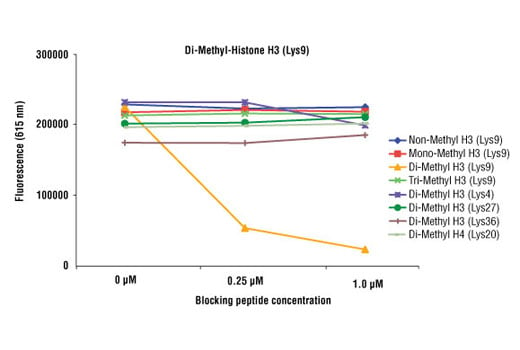



Monoclonal antibody is produced by immunizing animals with a synthetic peptide corresponding to the amino terminus of histone H3 in which Lys9 is di-methylated.


Product Usage Information
For optimal ChIP and ChIP-seq results, use 10 μl of antibody and 10 μg of chromatin (approximately 4 x 106 cells) per IP. This antibody has been validated using SimpleChIP® Enzymatic Chromatin IP Kits. The CUT&Tag dilution was determined using CUT&Tag Assay Kit #77552.
| Application | Dilution |
|---|---|
| Western Blotting | 1:1000 |
| Immunoprecipitation | 1:50 |
| Immunofluorescence (Immunocytochemistry) | 1:200 - 1:800 |
| Flow Cytometry (Fixed/Permeabilized) | 1:50 - 1:200 |
| Chromatin IP | 1:50 |
| Chromatin IP-seq | 1:50 |
| CUT&Tag | 1:50 |







Specificity/Sensitivity
Species Reactivity:
Human, Mouse, Rat, Monkey




Supplied in 10 mM sodium HEPES (pH 7.5), 150 mM NaCl, 100 µg/ml BSA, 50% glycerol and less than 0.02% sodium azide. Store at –20°C. Do not aliquot the antibody.
For a carrier free (BSA and azide free) version of this product see product #80806.


参考图片
Di-Methyl Histone H3 (Lys9) (D85B4) XP® Rabbit mAb specificity was determined by peptide ELISA. The graph depicts the binding of the antibody to pre-coated di-methyl histone H3 (Lys9) peptide in the presence of increasing concentrations of various competitor peptides. As shown, only the di-methyl histone H3 (Lys9) peptide competed away binding of the antibody.
Western blot analysis of extracts from various cell lines using Di-Methyl-Histone H3 (Lys9) (D85B4) XP® Rabbit mAb.
Confocal immunofluorescent analysis of HeLa cells using Di-Methyl-Histone H3 (Lys9) (D85B4) XP® Rabbit mAb (green). Actin filaments have been labeled with DY-554 phalloidin (red).
Flow cytometric analysis of Jurkat cells using Di-Methyl-Histone H3 (Lys9) (D85B4) XP® Rabbit mAb (solid line) compared to concentration-matched Rabbit (DA1E) mAb IgG XP® Isotype Control #3900 (dashed line). Anti-rabbit IgG (H+L), F(ab')2 Fragment (Alexa Fluor® 488 Conjugate) #4412 was used as a secondary antibody.
Chromatin immunoprecipitations were performed with cross-linked chromatin from HeLa cells and either Di-Methyl-Histone H3 (Lys9) (D85B4) XP® Rabbit mAb or Di-Methyl-Histone H3 (Lys9) Antibody #9753, using SimpleChIP® Plus Enzymatic Chromatin IP Kit (Magnetic Beads) #9005. DNA Libraries were prepared using SimpleChIP® ChIP-seq DNA Library Prep Kit for Illumina® #56795. The figure shows binding across XYLT1 gene. For additional ChIP-seq tracks, please download the product data sheet.
Chromatin immunoprecipitations were performed with cross-linked chromatin from HeLa cells and either Di-Methyl-Histone H3 (Lys9) (D85B4) XP® Rabbit mAb or Di-Methyl-Histone H3 (Lys9) Antibody #9753, using SimpleChIP® Plus Enzymatic Chromatin IP Kit (Magnetic Beads) #9005. DNA Libraries were prepared using SimpleChIP® ChIP-seq DNA Library Prep Kit for Illumina® #56795. The figure shows binding across chromosome 16 (upper), including XYLT1 gene (lower).
Chromatin immunoprecipitations were performed with cross-linked chromatin from HeLa cells and either Di-Methyl-Histone H3 (Lys9) (D85B4) XP® Rabbit mAb or Normal Rabbit IgG #2729 using SimpleChIP® Enzymatic Chromatin IP Kit (Magnetic Beads) #9003. The enriched DNA was quantified by real-time PCR using SimpleChIP® Human GAPDH Exon 1 Primers #5516, SimpleChIP® Human RPL30 Exon 3 Primers #7014, SimpleChIP® Human AFM Intron 1 Primers #5098, and SimpleChIP® Human α Satellite Repeat Primers #4486. The amount of immunoprecipitated DNA in each sample is represented as signal relative to the total amount of input chromatin, which is equivalent to one.
CUT&Tag was performed with HeLa cells and Di-Methyl-Histone H3 (Lys9) (D85B4) XP® Rabbit mAb, using CUT&Tag Assay Kit #77552. DNA library was prepared using CUT&Tag Dual Index Primers and PCR Master Mix for Illumina Systems #47415. The figure shows binding across the XYLT1 gene.
CUT&Tag was performed with HeLa cells and Di-Methyl-Histone H3 (Lys9) (D85B4) XP® Rabbit mAb, using CUT&Tag Assay Kit #77552. DNA library was prepared using CUT&Tag Dual Index Primers and PCR Master Mix for Illumina Systems #47415. The figures show binding across chromosome 16 (upper), including the XYLT1 gene (lower).



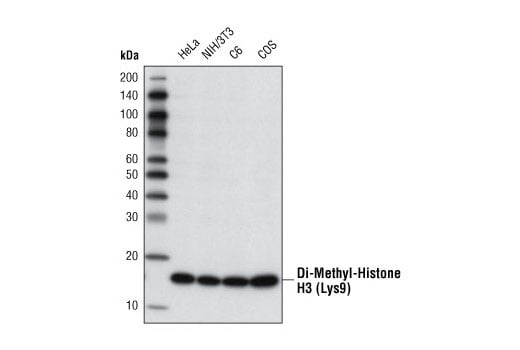
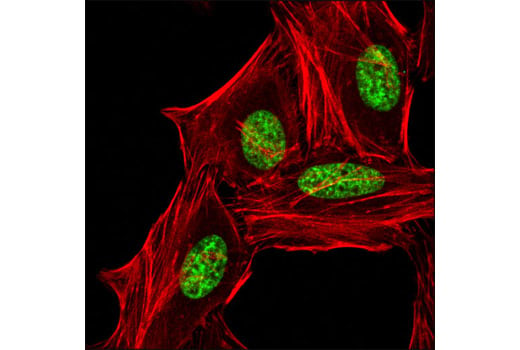
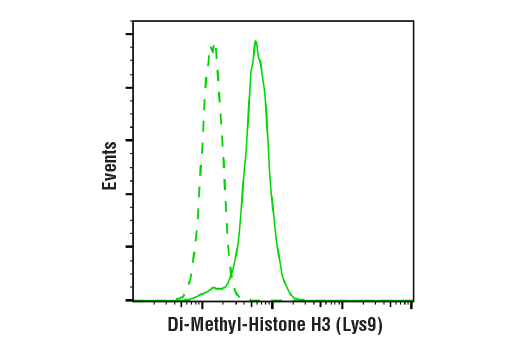
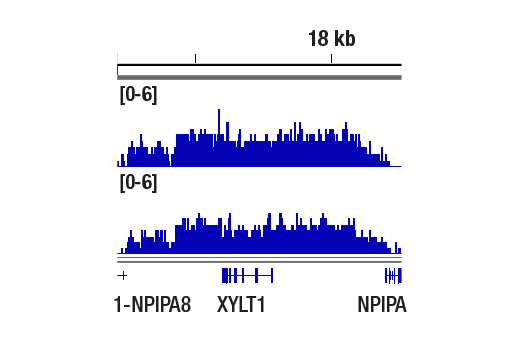
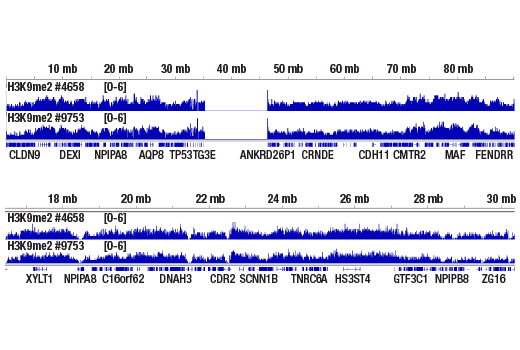
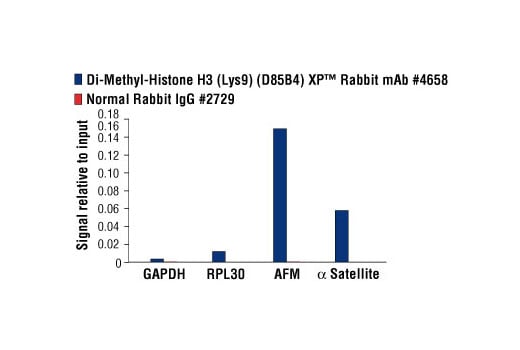
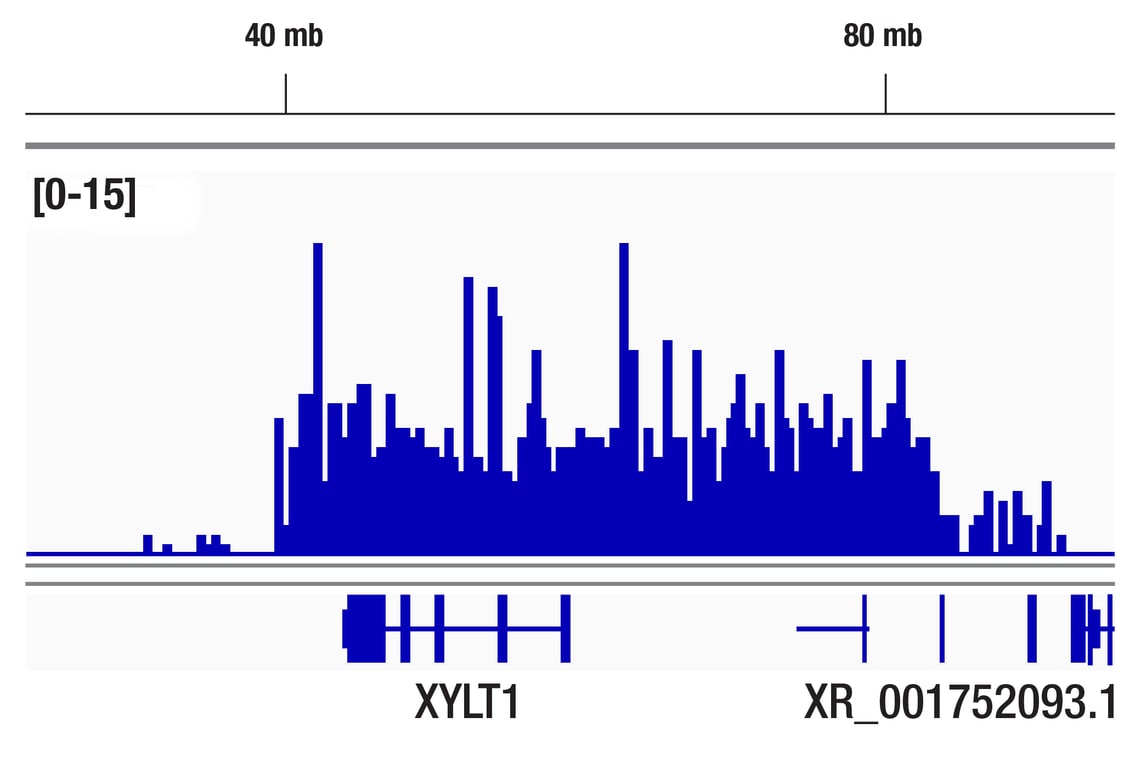
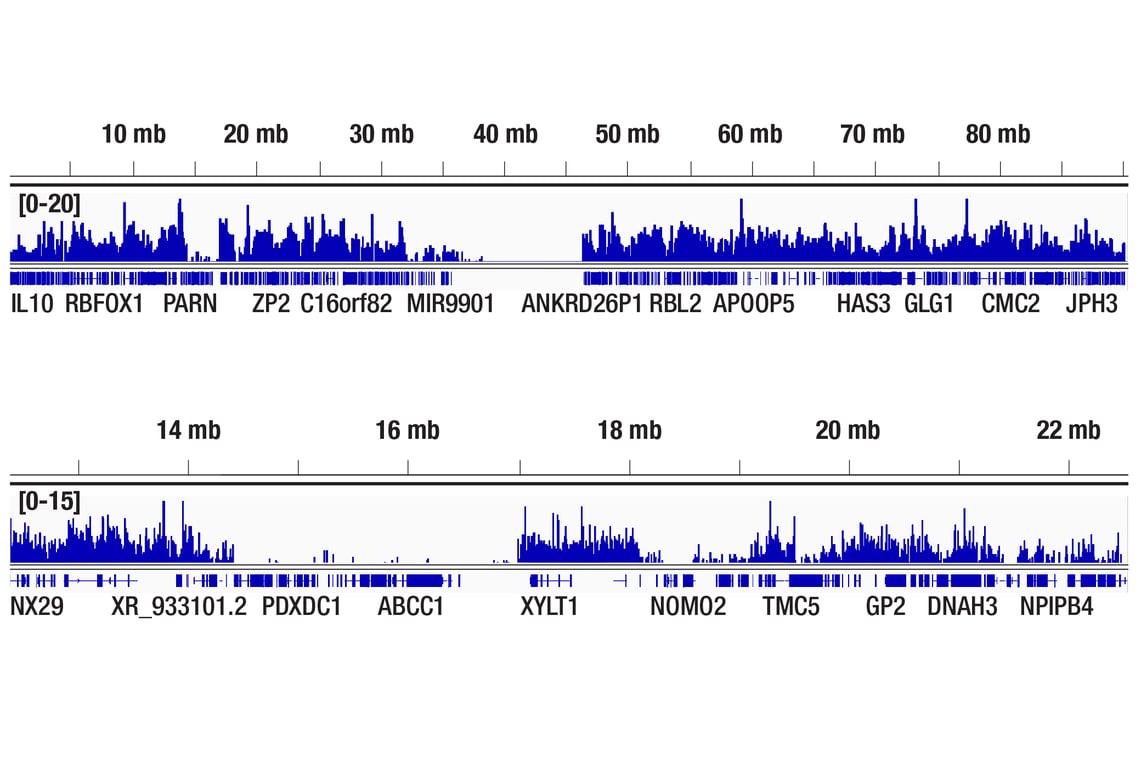


 用小程序,查商品更便捷
用小程序,查商品更便捷




